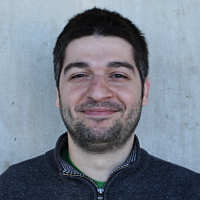John Salogiannis, Ph.D.
Postdoctoral Fellow
Boston Children’s Hospital

Postdoctoral Fellow
Boston Children’s Hospital
Eukaryotic cells use microtubule-based transport and molecular motors for the delivery of vesicles and organelles required for cell growth, maturation, and survival. Perturbations in microtubule-based transport are an early hallmark of neurological diseases. My long-term goals are to determine how movements of a diverse set of cargos are spatially and temporally regulated in cells, and how they go awry in disease. The canonical view of how cargos move is that each cargo has an adaptor protein that directly links it to the transport machinery. In contrast to this view, my postdoctoral work, and other recent studies, revealed a new mode of transport called “hitchhiking”: some organelles can move by connecting to rapidly moving endosomes at membrane contact sites. Consequently, hitchhiking cargos bypass the need to recruit their own set of molecular motors, and are tightly coupled to the movement of endosomes. Peroxisomes, lipid droplets, and the endoplasmic reticulum all achieve motility in filamentous fungi by hitchhiking. My preliminary data demonstrates that peroxisomes also hitchhike on endosomes in hippocampal neurons.
The molecular mechanisms dictating organelle hitchhiking are not well understood. My published work identified the novel tether PxdA as a central regulator of endosome-mediated hitchhiking of peroxisomes, but how it achieves this remains unclear. To determine the mechanism of organelle hitchhiking, I will use a combination of live-cell imaging, electron microscopy, biochemistry, and genetics. In aim 1 I will determine how peroxisomes, lipid droplets, and endoplasmic reticulum hitchhike on endosomes in the filamentous fungus, Aspergillus nidulans. In aim 2 I will determine if hitchhiking is conserved in mammals. I will follow up on my preliminary observations that peroxisomes hitchhike in neuronal axons and determine if other organelles hitchhike in neurons. These experiments will lead to a mechanistic understanding of hitchhiking, a new paradigm in microtubule-based transport.